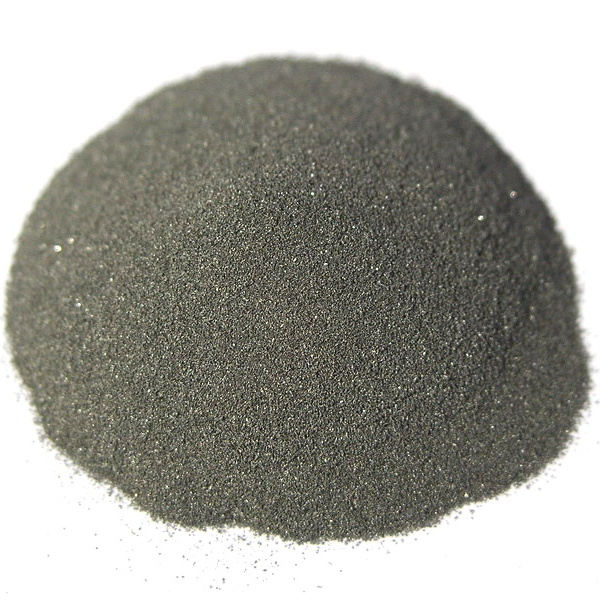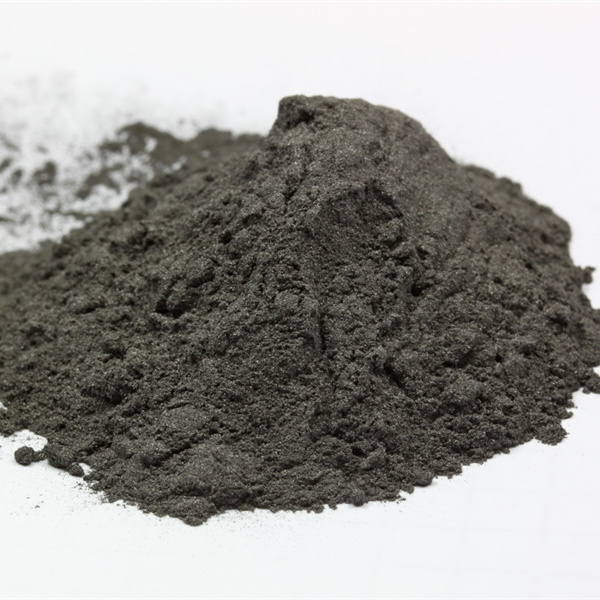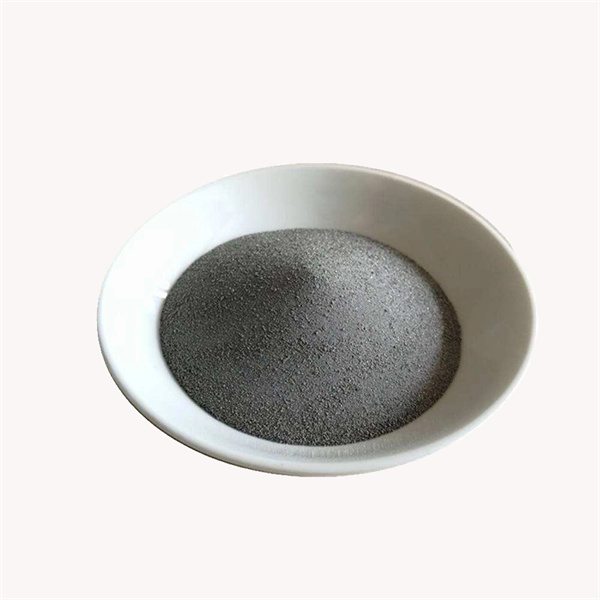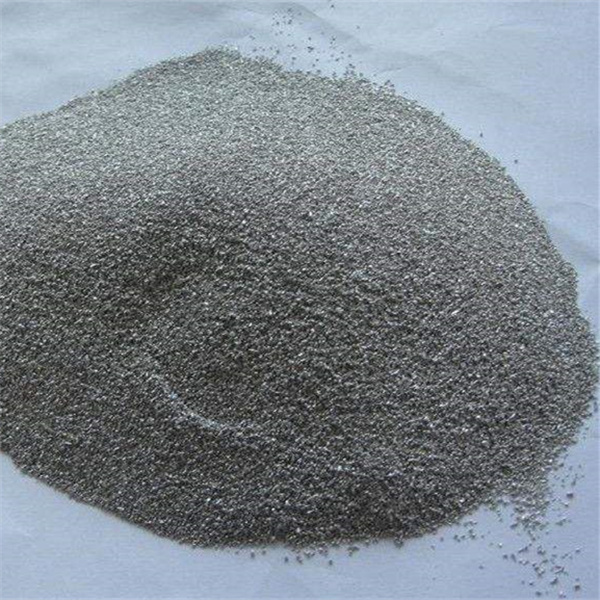Pure aluminum powder
Pure aluminum powder contains 99% or higher aluminum content. It provides low density combined with good ductility, conductivity, and corrosion resistance.
Low MOQ
Provide low minimum order quantity to meet different needs.
OEM & ODM
Provide customized products and design services to meet unique customer needs.
Adequate Stock
Ensure fast order processing and provide reliable and efficient service.
Customer Satisfaction
Provide high quality products with customer satisfaction at the core.
share this product
Table of Contents
Overview of Pure Aluminum Powder
Pure aluminum powder contains 99% or higher aluminum content. It provides low density combined with good ductility, conductivity, and corrosion resistance.
Key properties and advantages of pure aluminum powder include:
Pure Aluminum Powder Properties and Characteristics
| Properties | Details |
|---|---|
| Composition | 99% or higher Al content |
| Density | 2.7 g/cc |
| Particle shape | Spherical, irregular |
| Size range | 1-150 microns |
| Apparent density | Up to 50% of true density |
| Conductivity | Excellent electrical and thermal conductivity |
| Corrosion resistance | Good due to protective oxide layer |
Pure aluminum powder is suitable for applications like thermite welding, diamond tools, conductive coatings, pyrotechnics, and metal injection molding.
Pure Aluminum Powder Composition
Typical composition of pure aluminum powder:
Pure Aluminum Powder Composition
| Element | Weight % |
|---|---|
| Aluminum (Al) | 99% min |
| Silicon (Si) | 0.5% max |
| Iron (Fe) | 0.5% max |
| Copper (Cu) | 0.05% max |
| Manganese (Mn) | 0.05% max |
| Magnesium (Mg) | 0.05% max |
| Other impurities | 0.05% max |
- Aluminum provides low density, ductility and conductivity
- Impurity levels of other elements are carefully controlled
- High aluminum purity provides optimal electrical and thermal conductivity
The high aluminum content ensures excellent conductivity combined with good corrosion resistance and moderate strength.
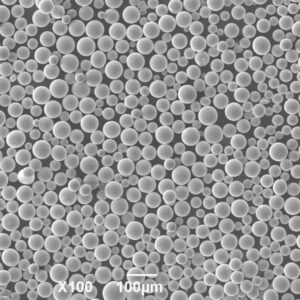
Pure Aluminum Powder Physical Properties
Pure Aluminum Powder Physical Properties
| Property | Values |
|---|---|
| Density | 2.7 g/cc |
| Melting point | 660°C |
| Thermal conductivity | 237 W/mK |
| Electrical resistivity | 2.65 μΩ-cm |
| CTE | 23.1 x 10^-6 /K |
| Reflectivity | 87% at 400 nm wavelength |
- Very low density compared to most metals
- High reflectivity and thermal conductivity
- Low electrical resistivity provides high conductivity
- Relatively high CTE necessitates design considerations
- Maintains strength up to moderately high temperatures
The properties make pure aluminum suitable for lightweight applications needing electrical/thermal conductivity.
Pure Aluminum Powder Mechanical Properties
Pure Aluminum Powder Mechanical Properties
| Property | Values |
|---|---|
| Tensile strength | 90-100 MPa |
| Yield strength | 35-45 MPa |
| Elongation | 35-40% |
| Hardness | 25-35 HB |
| Fatigue strength | 50-90 MPa |
| Shear strength | 60-65 MPa |
- Relatively low tensile and yield strength
- Very high elongation provides excellent ductility
- Low hardness compared to most metals
- High fatigue strength suited for cyclic loading
- Properties can be enhanced through alloying additions
The properties make pure aluminum suitable for soft, ductile applications requiring conductivity and formability.
Pure Aluminum Powder Applications
Typical applications of pure aluminum powder include:
Pure Aluminum Powder Applications
| Industry | Uses |
|---|---|
| Thermite welding | Rail welding, metal joining |
| Additive manufacturing | Low strength components |
| Explosives and pyrotechnics | Thermite compositions |
| Powder coatings | Conductive and resistant coatings |
| Diamond tools | Metal matrix with diamond particles |
| Fireworks | Fuel and pyrotechnic compositions |
Some specific product uses:
- Thermite mixtures for in-situ metal joining and welding
- Low melting point casting alloys
- Electrically conductive coatings and RF shielding
- Aluminum-diamond tools for stone cutting
- Flash powder and pyrotechnic compositions
- Metal injection molding of non-structural parts
The ductility, conductivity and reactivity make pure aluminum suitable for these niche applications.
Pure Aluminum Powder Specifications
Key specifications for pure aluminum powder include:
Pure Aluminum Powder Specifications
| Standard | Description |
|---|---|
| ASTM B787 | Standard for pure aluminum powders |
| ASTM B859 | Specs for aluminum and aluminum alloy powders |
| DIN 1718-1 | Designation system for aluminum and aluminum alloys |
| GJB320B | Chinese military standard for aluminum and aluminum alloy powders |
These define:
- Minimum 99% aluminum content
- Limits on impurities like Fe, Si
- Powder characteristics like apparent density and particle size distribution
- Approved production methods like atomization
- Sampling and testing protocols
Meeting the standards ensures suitability for applications needing high purity aluminum powder.
Pure Aluminum Powder Particle Sizes
Pure Aluminum Powder Particle Size Distribution
| Size | Characteristics |
|---|---|
| 1-10 microns | Ultrafine grade used in printing pastes |
| 10-45 microns | Fine grade suitable for coatings, pressing |
| 45-150 microns | Coarse grade offers better flowability |
- Finer sizes provide a smooth finish and high reactivity
- Coarser powder has improved flow for automated processing
- Both spherical and irregular particle shapes are available
- Size distribution depends on targeted use
Controlling particle size distribution optimizes processing behavior, density, reactivity, and finish.
Pure Aluminum Powder Apparent Density
Pure Aluminum Powder Apparent Density
| Apparent Density | Details |
|---|---|
| Up to 50% of true density | For irregular morphology powder |
| 1.3-1.7 g/cc | Higher for spherical powder |
- Spherical powder shape provides higher apparent density
- Irregular particles have lower density around 30-40%
- Higher density improves powder flow and compactibility
- Values up to 60% are possible with optimized spherical powder
Higher apparent density leads to better manufacturing productivity and part quality.
Pure Aluminum Powder Production
Pure Aluminum Powder Production
| Method | Details |
|---|---|
| Atomization | Molten aluminum stream broken into fine droplets that solidify into powder |
| Ball milling | Mechanical milling classifies coarse powder into fine powder |
| Annealing | Removes internal stresses and improves powder compressibility |
| Sieving | Classifies powder into different size fractions |
- Atomization allows large volume production with controlled particle sizes
- Milling provides lower cost size reduction of coarse powder
- Annealing and sieving provide customized powder sizes and shapes
Combination of methods produces high purity aluminum powder with application-specific characteristics.
Pure Aluminum Powder Pricing
Pure Aluminum Powder Pricing
| Factor | Impact on Price |
|---|---|
| Purity | Higher purity grades cost more |
| Particle size | Ultrafine powder is more expensive |
| Order volume | Bulk orders get discounted pricing |
| Production method | Complex methods increase cost |
| Packaging | Special packaging adds cost |
Indicative Pricing
- Fine pure aluminum powder: $3-6 per kg
- Coarse pure aluminum powder: $2-4 per kg
- Large volume pricing can be up to 30% lower
Pricing depends on purity, particle size, order quantity, production method and customization requirements.
Pure Aluminum Powder Suppliers
Pure Aluminum Powder Suppliers
| Company | Location |
|---|---|
| Advanced Chemical Company | USA |
| Micron Metals | USA |
| Baohua Metal Materials | China |
| Hengxing Metallurgical | China |
| Shanghai ShuiDing Powder Material | China |
| Reade Advanced Materials | USA |
Selection factors for suppliers:
- Purity levels and grades available
- Production capacity and lead times
- Average particle size ranges
- Customization of particle distribution
- Packaging options
- Pricing levels based on order quantities
- Compliance with international standards
Pure Aluminum Powder Handling and Storage
Pure Aluminum Powder Handling
| Recommendation | Reason |
|---|---|
| Use proper ventilation | Avoid concentrated dust environment |
| Employ grounding systems | Prevent static discharge during handling |
| Limit moisture exposure | Prevents oxidation of particles |
| Follow safe protocols | Reduce health and fire hazards |
| Avoid ignition sources | Flammable powder risk |
| Use non-sparking tools | Prevent possibility of ignition |
Storage Recommendations
- Store in dry, inert sealed containers
- Maintain storage temperatures below 27°C
- Limit exposure to oxidizers like nitric acid
Proper precautions during handling and storage help preserve purity and prevent oxidation or ignition risks.
Pure Aluminum Powder Inspection and Testing
Pure Aluminum Powder Testing
| Test | Details |
|---|---|
| Chemical analysis | XRF or ICP testing verifies composition |
| Particle size distribution | Laser diffraction analysis |
| Apparent density | Hall flowmeter test per ASTM B212 standard |
| Powder morphology | SEM imaging of particle shape |
| Flow rate analysis | Gravity flow rate through specified funnel |
| Moisture measurement | Loss on drying test |
Testing ensures the powder meets the required purity levels, particle characteristics, density specifications, morphology and flowability per applicable standards.
Pure Aluminum Powder Pros and Cons
Advantages of Pure Aluminum Powder
- Low density provides lightweight properties
- Excellent electrical and thermal conductivity
- Good corrosion resistance
- High ductility and excellent formability
- Recyclable and environmentally friendly
- Cost-effective compared to other conductive powders
Limitations of Pure Aluminum Powder
- Low strength limits load bearing structural applications
- Moderate high temperature mechanical strength
- Requires protective coatings in corrosive environments
- Sensitive to contamination from moisture and other powders
- Pyrophoric nature requires careful handling
- Gradually oxidizes over time if uncoated
Comparison With Al-Mg Alloy Powder
Pure Al vs Al-Mg Alloy Powder
| Parameter | Pure Al | Al-Mg |
|---|---|---|
| Density | 2.7 g/cc | 2.7 g/cc |
| Strength | 90-100 MPa | 150-220 MPa |
| Conductivity | Excellent | Good |
| Corrosion resistance | Good | Excellent |
| Cost | Low | High |
| Uses | Thermite welding, pyrotechnics | Structural components |
- Pure Al offers better conductivity and lower cost
- Al-Mg alloy provides higher strength
- Pure Al suited for electrical applications and pyrotechnics
- Al-Mg preferred for structural lightweight components
Pure Aluminum Powder FAQs
Q: What are the main applications of pure aluminum powder?
A: Main applications include thermite welding, conductive coatings, pyrotechnic compositions, diamond tools, metal injection molding of non-structural parts, and low-melting casting alloys.
Q: What precautions should be taken when working with pure aluminum powder?
A: Recommended precautions include proper ventilation, avoiding ignition sources, explosion-proof equipment, grounding systems, non-sparking tools, protective gear, safe protocols, and inert storage sealed away from contaminants.
Q: How does pure aluminum powder differ from aluminum alloy powders?
A: Pure aluminum has 99% or higher Al content while alloy powders contain other elements like magnesium, silicon, zinc. Pure Al offers high conductivity but lower strength than alloys.
Q: What affects the properties of pure aluminum powder components?
A: Key factors are apparent density, particle size distribution, compaction pressure, sintering parameters, impurities, and final part porosity.
About Met3DP
Product Category
HOT SALE
CONTACT US
Any questions? Send us message now! We’ll serve your request with a whole team after receiving your message.






